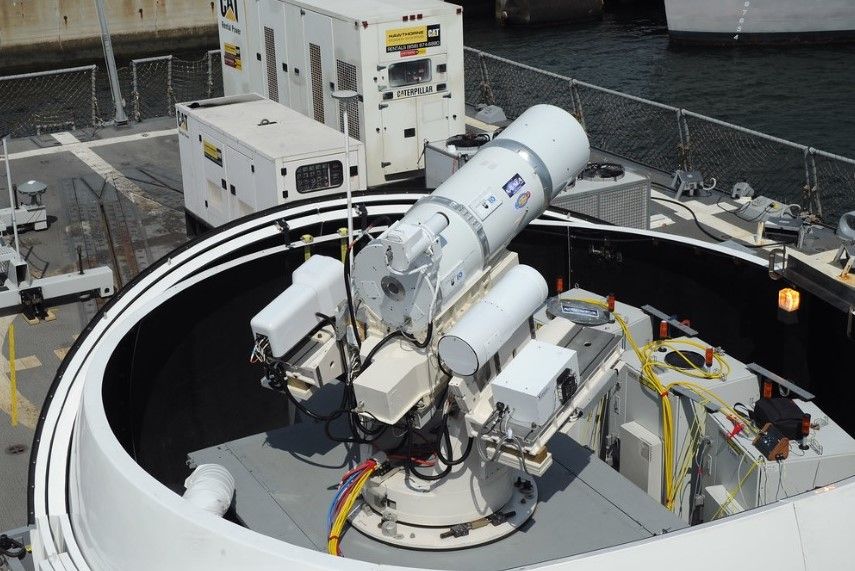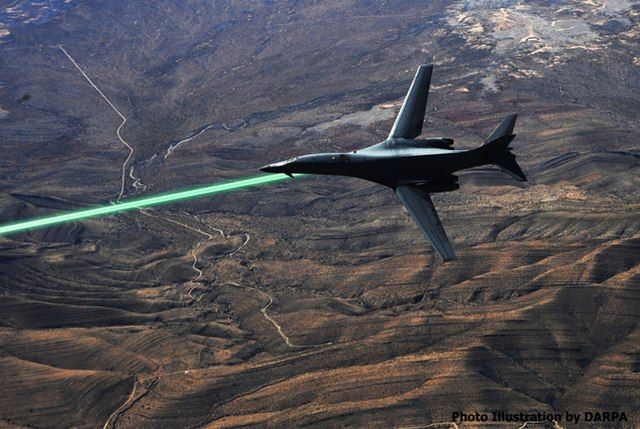How Viable are Lasers as Weapons?
A look at the progress of military research being made towards laser-based weaponry.

Laser guns have long been at home in science fiction, but today’s military researchers are now much closer to making them a reality.
At the forefront of this development is the US military, who have spent an average of $1 billion over each of the last three years in developing laser-based weaponry. This funding has now created ‘directed energy systems’ capable of destroying enemy missiles, rockets, and planes mid-flight with incredible precision and dexterity.
As the military journal C4isrnet explains, “The weapons come mainly in two forms: high-energy laser and high-power microwave. The former focuses a beam or beams of energy to blind, cut or inflict heat damage on a target. The latter unleashes waves of energy that fry or overwhelm electronic components.”

Tests have already been conducted at the White Sands Air Force research laboratory in New Mexico where multiple air launched missiles were successfully shot down in flight using a fibre opticlaser. While this version of a ‘self-protect high energy laser demonstrator’ currently only exists as a heavy ground-based system, plans are moving forward towards smaller, lighter units suitable for attaching to a jet fighter wing.
The US Army is also developing laser weapons as anti-drone devices, either as small handheld guns or mounted onto helicopters. It is also investing heavily in a high-power microwave kit known as Leonidas, as well as a Mobile Radio Frequency-Integrated UAS Suppressor (MORFIUS).
However, it is possibly the US Navy that has taken the greatest steps towards achieving laser weaponry. Selected destroyers have already installed Lockheed Martin’s High Energy Laser with Integrated Optical-dazzler and Surveillance (HELIOS), as well as its own Optical Dazzling Interdictor Navy (ODIN), to intercept, destroy, or disrupt enemy drones and smaller vessels.
Current HELIOS hardware includes a 60-kilowatt laser (with the potential to be increased to 150 kilowatts with upgrades) with plans to fully integrate the weapon with its conventional defences and ship’s power system.

“A lot of people think that lasers are just something that shoots but lasers are also a very good sensor,” adds Rear Adm. Ron Boxall. “As you get closer to a radar, your radar gets worse. As you get closer to a laser, it gets better.”
Such is the belief that lasers should be at the heart of naval defence systems, they are even being integrated not only with the conventional Aegis defences but also into the core structure of newer vessels.
“There is a viable path right now, with the US Department of Defence’s laser tech maturation program, to get to a 1-megawatt laser that can fit on a ship,” notes Bryan Clark, a retired submarine officer and analyst with the Center for Strategic and Budgetary Assessments. “Once you get past 500 kilowatts, you start getting to a laser that can take down incoming cruise missiles — even supersonic ones.”
Other nations are also looking into how laser weaponry could be deployed among its current and future hardware. For example, the future Russian MiG-41, the Franco-German and British Tempest stealth fighter programmes, as well as the Japanese F3 and the engines of the Typhoon are all planned to include a turbo generator that will generate and manage additional electricity designed for powering directed energy weapons.

Advantages of Laser Weaponry
· Extremely low cost per shot, as only energy used.
· Almost unlimited ammunition – if you have fuel or battery power you can fire.
· Highly accurate – firing at the speed of light means that almost no adjustment is need for a target’s speed.
· High speed – capable of shooting down even hypersonic planes and missiles.
Disadvantages of Laser Weaponry
· Considerable amount of power required for each shot (particularly over longer distances) putting current battery capability to the extreme limits, especially for handheld guns.
· Decreased effectiveness when firing in hazy atmospheric conditions, as the light beam can scatter and diffuse.
· Lasers can create thermal build-up requiring a cooling system.
· Lasers can continue almost indefinitely, posing a greater risk of friendly fire to anything behind the target. Vegetation could catch fire, satellites could be destroyed etc.
· Laser weapons placed on ships pose a risk to sailors from the laser’s reflection off the sea.
· Can only fire in a straight line.
Overall, the belief is that it is not a matter of if laser weapons happen, but when. Most of the technology is already in place, it now just needs some refinement, upscaling, improved power sourcing and targeting before it becomes a commonplace weapon. This is particularly true with pressing fears over how to combat hypersonic missiles.
With this in mind, the race to achieve a working laser defence system is on.
“The key is about acceleration,” explains Admiral John Aquilino, head of US Indo-Pacific Command. “If that capability exists, and we can deliver in 18 to 24 months, I’m ready to plug it in. I’m ready to experiment with it tomorrow. I’ve got the largest test range on the globe.”
As military analyst Brian Clark concludes, “The laser being able to shoot down cruise missiles: That will happen.”

